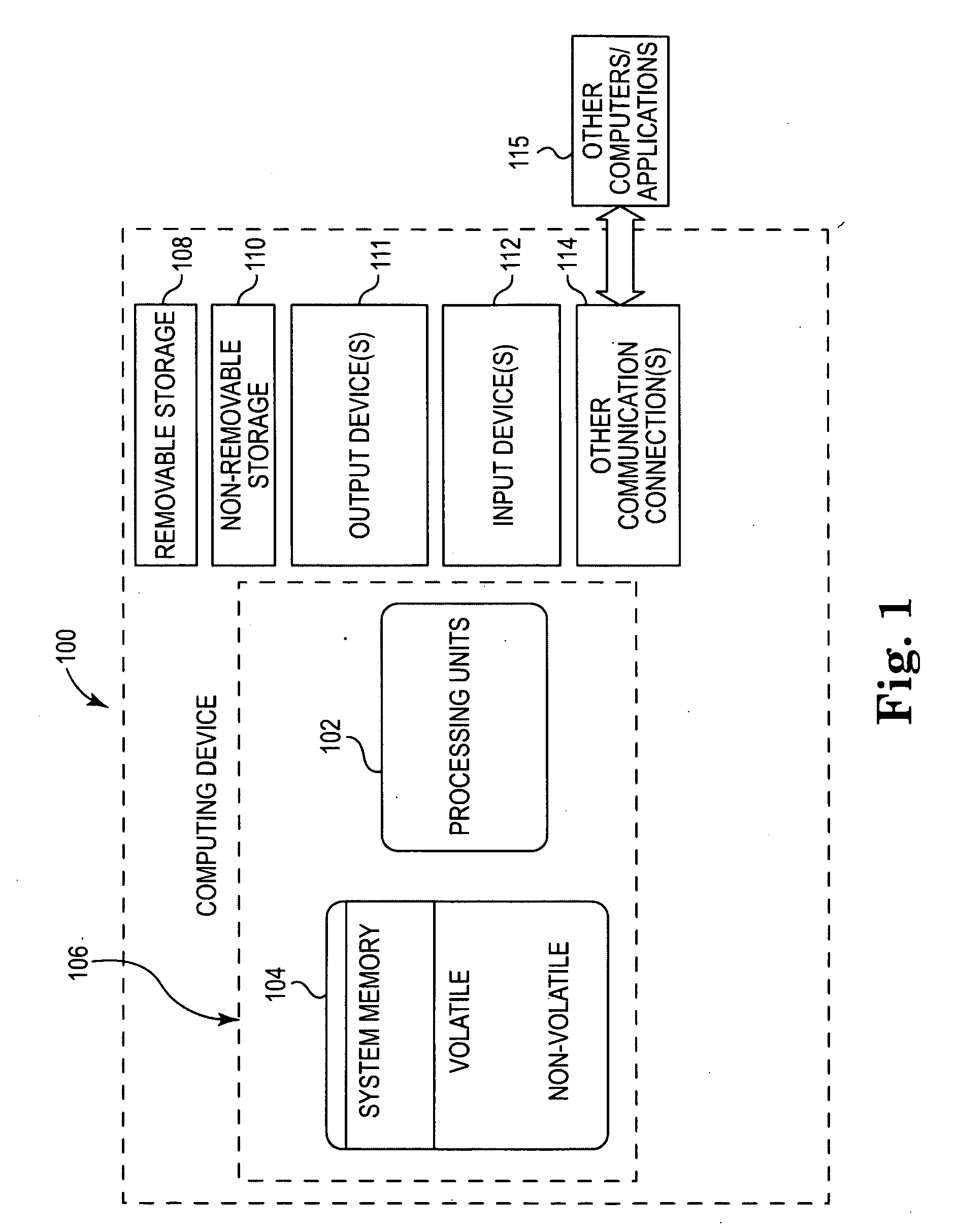Language-based model for asynchronous operations
a technology of asynchronous operations and language, applied in the field of language-based models for asynchronous operations, can solve the problems of large asynchronous operations from existing apm-based operations, high cost of synchronous operations, and difficulty in defining and implementing asynchronous operations,
- Summary
- Abstract
- Description
- Claims
- Application Information
AI Technical Summary
Benefits of technology
Problems solved by technology
Method used
Image
Examples
example 1
[0025]
public async byte[ ] ReadFileToEnd(string path){ List data = new List( ); Stream stream =File.OpenRead(path); byte[ ] next = new byte[1024 * 1024]; / / The compiler will find BeginRead / EndRead and convert the APM / / API into an asynchronous method call. int numRead = stream.Read(next, 0, next.Length); while (numRead > 0); { data.Add(next); next = new byte[1024 * 1024]; numRead = stream.Read(next, 0, next.Length); } return FoldData(data); / / Flatten the list into one long array.}
[0026]Example 1 includes a set of “Read” operations composed serially, i.e., each Read is issued after the previous one has been completed. The code appears as a typical synchronous form, except for the declaration or keyword async. The compiler transforms the two instances of “stream.Read” into calls to the corresponding Begin / End pair by relying on the efficient callback version of the interfaces rather than by using WaitHandle or polling.
[0027]If after the first read operation issue...
example 2
[0030]
public async byte[ ][ ] ReadFiles(string [ ] paths){ byte [ ][ ] result . . . for (int i = 0, i { / / Calling an async method from an async method, the compiler / / provides support. result[i] = ReadFiletoEnd(path); } return result;}
[0031]Example 2 also calls a series of asynchronous operations (in this case defined as an asynchronous method) and lets the operations pause and resume as they are run. Just as in the Example 1, each operation is started once the previous operation is complete. Although each file can be read independently, the loop serializes the read operations. Note that when ReadFileToEnd pauses, ReadFiles also pauses—the pausing effect goes from the “leaf” operation all the way out to the outermost method, and the resumption starts at the outermost level and goes in toward the leaf.
[0032]Example 3 provides an exemplary invocation of an outermost asynchronous method, which can be ultimately composed.
example 3
[0033]
IAsyncResult ar = BeginReadFiles(paths, ar => { byte [ ][ ] fileContents = EndReadFiles(ar); ... / / process file contents });
[0034]In one example, the outermost frame of any asynchronous operation is started and treated as an APM, such as calling the operation and providing a callback. An alternative would include changing the CLR 136 stack model, which would affect other programming. Otherwise, the code is serialized and strung together in the language-based model as described in the other examples.
[0035]Delegate types, anonymous methods and lambdas can be defined as asynchronous by adding ‘async’ before the ‘delegate’ keyword:
public async delegate int Count(object obj);Action bar = async delegate(int x) { ... };bar.BeginInvoke(...);foo(async x => ...);
[0036]Some examples include a change to the binding of delegates created from asynchronous methods. For instance, the BeginInvoke( ) method is mapped directly to a call to BeginF, while the EndInvoke( ) method is mapped...
PUM
 Login to View More
Login to View More Abstract
Description
Claims
Application Information
 Login to View More
Login to View More - R&D
- Intellectual Property
- Life Sciences
- Materials
- Tech Scout
- Unparalleled Data Quality
- Higher Quality Content
- 60% Fewer Hallucinations
Browse by: Latest US Patents, China's latest patents, Technical Efficacy Thesaurus, Application Domain, Technology Topic, Popular Technical Reports.
© 2025 PatSnap. All rights reserved.Legal|Privacy policy|Modern Slavery Act Transparency Statement|Sitemap|About US| Contact US: help@patsnap.com



